Mad Hedge Technology Letter
November 30, 2022
Fiat Lux
Featured Trade:
(WEAK SALES FOR 2023)
(CRWD), (APPL), (SNAP), (DASH)

Mad Hedge Technology Letter
November 30, 2022
Fiat Lux
Featured Trade:
(WEAK SALES FOR 2023)
(CRWD), (APPL), (SNAP), (DASH)

Tech growth needs a timeout.
The recent earnings report from cyber security software firm CrowdStrike (CRWD) illustrates the difficulty for firms to project strength in forward guidance.
2023 isn’t looking so rosy for selling security software.
CRWD management offered us weak guidance citing a weakening macroeconomic picture and specifically telling us that small businesses are reluctant to sign new contracts for 2023.
The macroeconomic picture at best isn’t getting better, therefore, some of the forward guidance is coming in tepid.
The natural reaction is for tech stocks to sell off.
In 2022, it’s never been more difficult being a tech CEO and some of the best tech growth companies are getting haircuts that we used to never see before.
Even more worrisome is that tech companies like Apple and Twitter are starting to cannibalize each other because tech is now perceived as a zero sum game more than at any other time I can remember it.
Firms simply don’t think the pie is big enough to share.
This is why ecosystems like Apple and others are executing policies that directly hinder competition.
Unfortunately, cyber security is another add-on that is being sacrificed as tech companies become leaner and meaner.
Many tech companies can still function by skimping on the security defenses.
Shaving the fat to the bone is what we are currently seeing and that doesn’t bode well in the short term for tech stocks that are used to thriving in the excesses.
Another example is Snapchat (SNAP), which ordered back staff to a 4-day in-office work week starting February.
And it’s not just Snapchat or CrowdStrike.
The belt tightening has been broad-based in technology with DoorDash cutting another 1,250 jobs today.
Many of these growth companies over-hired during the government-mandated lockdowns and now are regressing back to the mean.
Since there are no more lockdowns in non-Chinese countries, there is no need for the giant number of DoorDash food deliverers.
Yet the US consumer is still spending even if they get less for each incremental $1 spent.
CrowdStrike reported annual recurring revenue (ARR) of $2.34 billion, up 54% year over year. The company also added 1,460 net new subscription customers for the quarter.
In high times, CrowdStrike and the tech growth with superior business models are unique and stand out.
However, in overwhelming macroeconomic weakness, CRWD gets lumped in with the rest.
I don’t recommend buying CRWD on the dip even if it feels cheap.
The peak CRWD share price almost reached $300 meaning the current stock price is only around 35% of what it once was.
Tech growth will overshoot to the upside when it finds it mojo again, which won’t come back until sometime in 2023.
The lockdowns brought forward a tsunami of demand, revenue, and momentum.
Now we are experiencing the reversing of those tailwinds which is why the stock price has suffered.
Avoid tech growth for now, they will have their time in the sun once again once the headwinds have been digested and CRWD should be on your list for a tech growth stock to purchase on the way up.

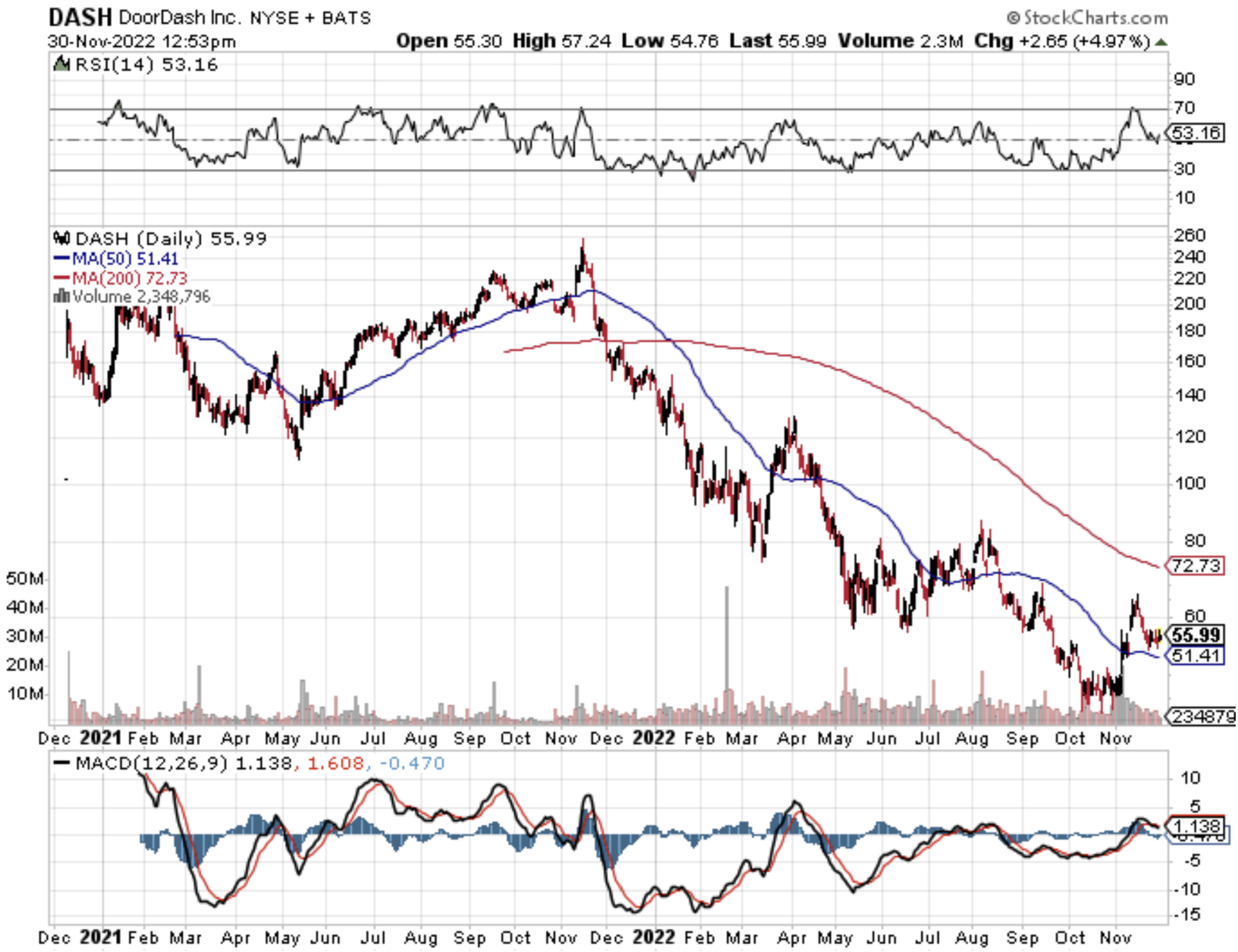
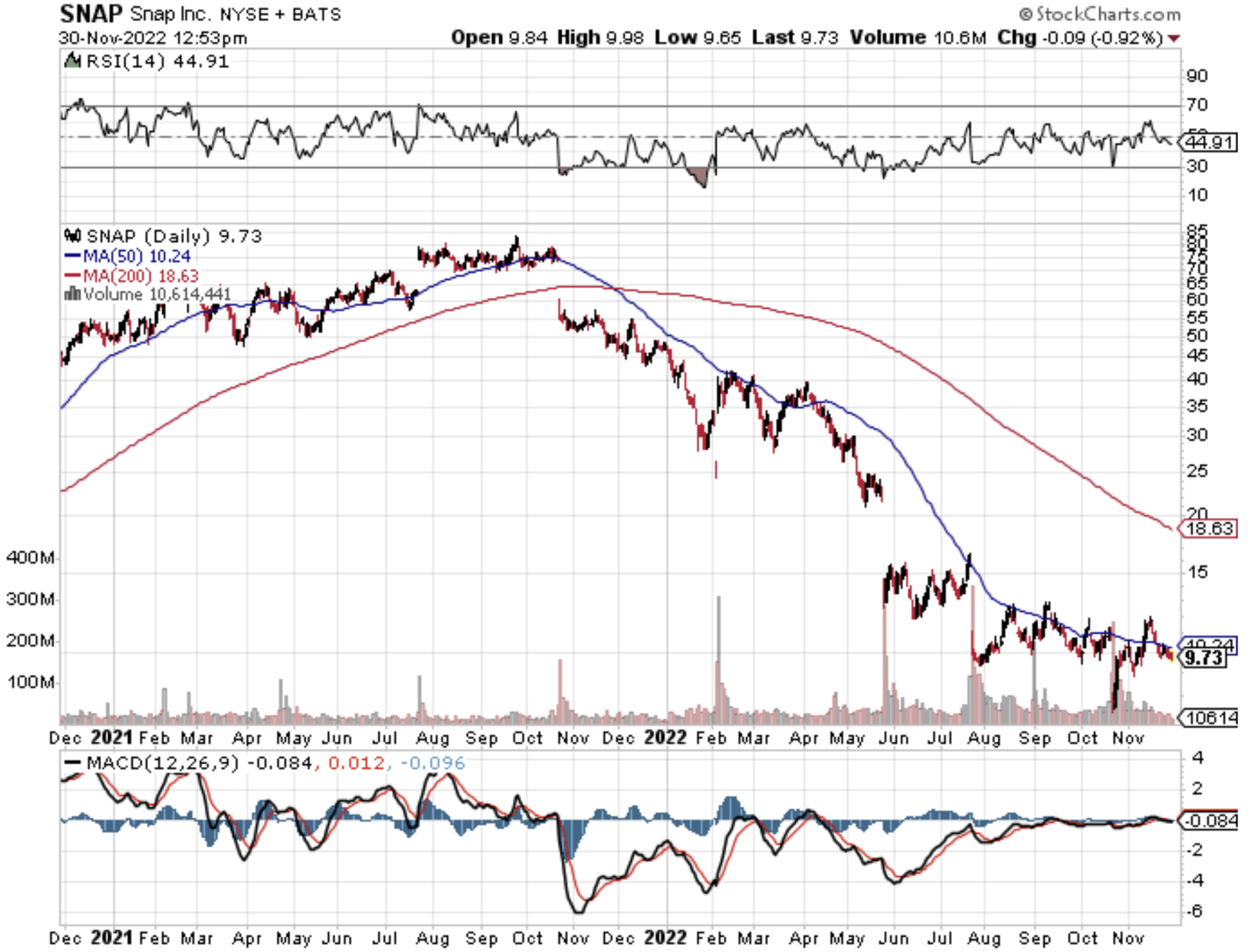
Mad Hedge Technology Letter
October 12, 2022
Fiat Lux
Featured Trade:
(THE RIDE SHARE DILEMMA)
(UBER), (LYFT), (DASH)

The US Federal government must have its way.
This one move blows up the business models of Uber (UBER), Lyft (LYFT), DoorDash (DASH), and any other tech platforms reliant on self-employed drivers.
Whether it’s denying the expansion of domestic energy capacity or meddling in self-employed worker status, the government is hell-bent on putting its stamp on the economy.
And boy they do.
It’s been rough lately for the ride share firms.
Uber fares have not been trending down lately as the combination of higher insurance costs, higher fuel prices, and higher costs to car ownership have meant passengers pay more to get from point A to point B.
I don’t need to chronicle how the cost of doing business is inching up because it’s happening everywhere and that just means the goalpost is narrowing in order to get costs below revenue.
That is the new normal whether we like it or not.
However, for Uber, their business model just might be untenable if they are forced to sign up drivers as full-time workers who receive full benefits including a 401K, health insurance, overtime pay, and paid time off.
This is expensive.
Under the US Labor Department's proposal, workers would be more likely to be classified as employees instead of independent contractors.
Tens of millions of people work in the global gig economy across services like food delivery and transport.
US Labor Secretary Marty Walsh said the rule would aim to stop companies from misclassifying workers as independent contractors.
For those that use ride share, there is no workaround to higher compensation in signing up full-time workers and costs will be passed down to the end user causing ridership to fall.
Gig economy firms have come under increased scrutiny as the industry grows in size.
Payments firm MasterCard has estimated that 78 million people will be employed in the gig economy by next year.
Gig workers are paid for individual tasks, such as food delivery or a car journey, rather than getting a regular wage.
In the first half of 2022, Uber lost almost $7 billion and the only reason why they can still exist is because of investors pouring money down a black hole to fund Uber’s existence.
I still don’t see how they make the unit economics work and their stock price reflects my analysis.
The stock trades around half of $51 which was achieved during the height of the reopening from the arbitrary lockdowns in 2021.
Reality has come back to bite as the same issues persist and every rally in this stock has been a great selling opportunity.
This ride share company has no chance of ever becoming profitable and they have done nothing to signal they are on the right track.
Just because they “do better than Lyft” doesn’t mean it’s a great long-term buy-and-hold stock or even a good company.
On top of poor unit economics, Uber’s ability to tap the debt markets to borrow money has been severely crimped.
Borrowing at extortionate rates makes it impossible to spin profits which means going back to the debt markets once again in a vicious negative feedback loop.
At some point, they will be shut out because of creditworthy issues even if not yet.
Who would want to invest in a company like that?
If a reader wants to put money to work in this stock, sell short after every bear market rally or buy outright puts after every rally.
Don’t reward tech firms that behave poorly or ones that can’t make money.
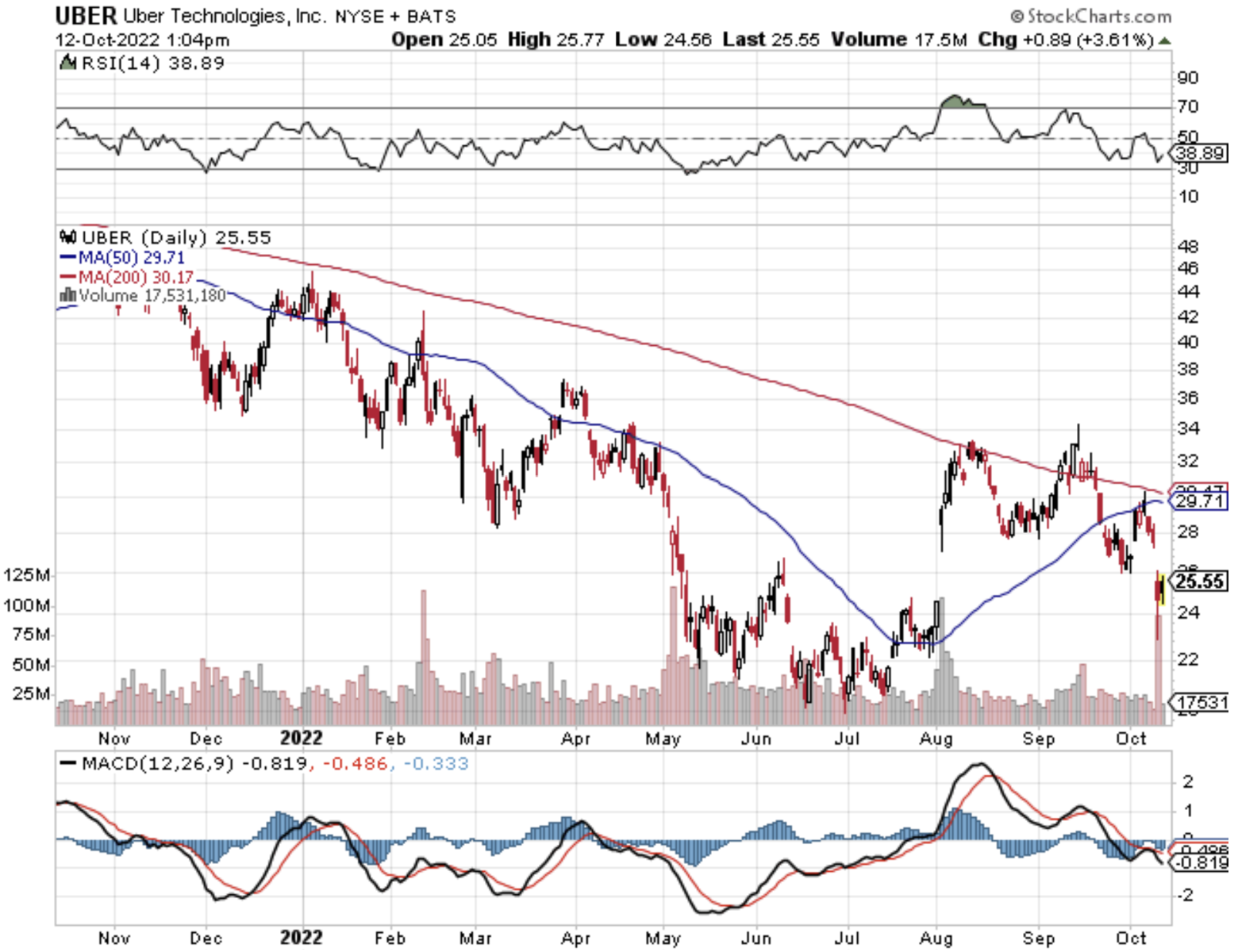
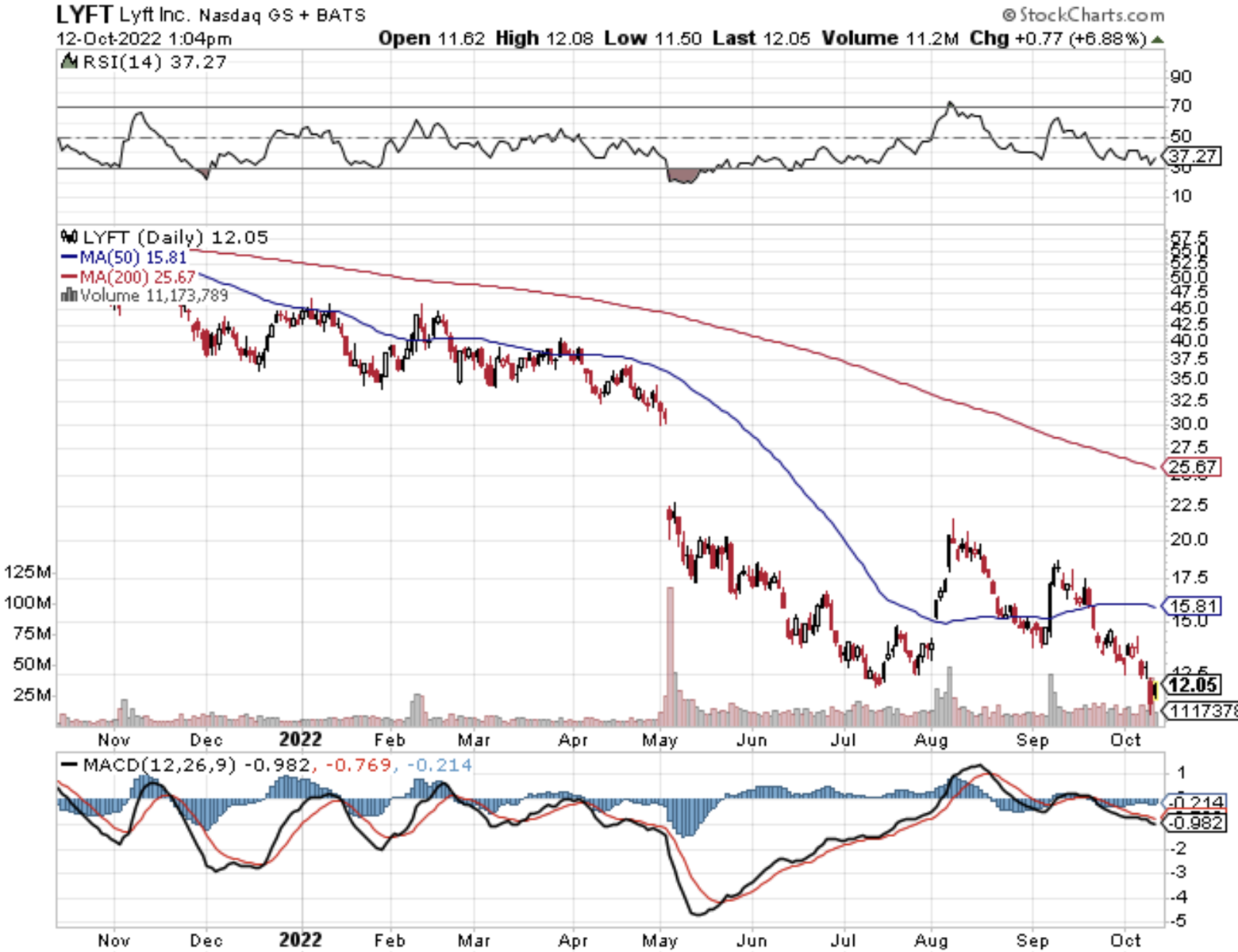
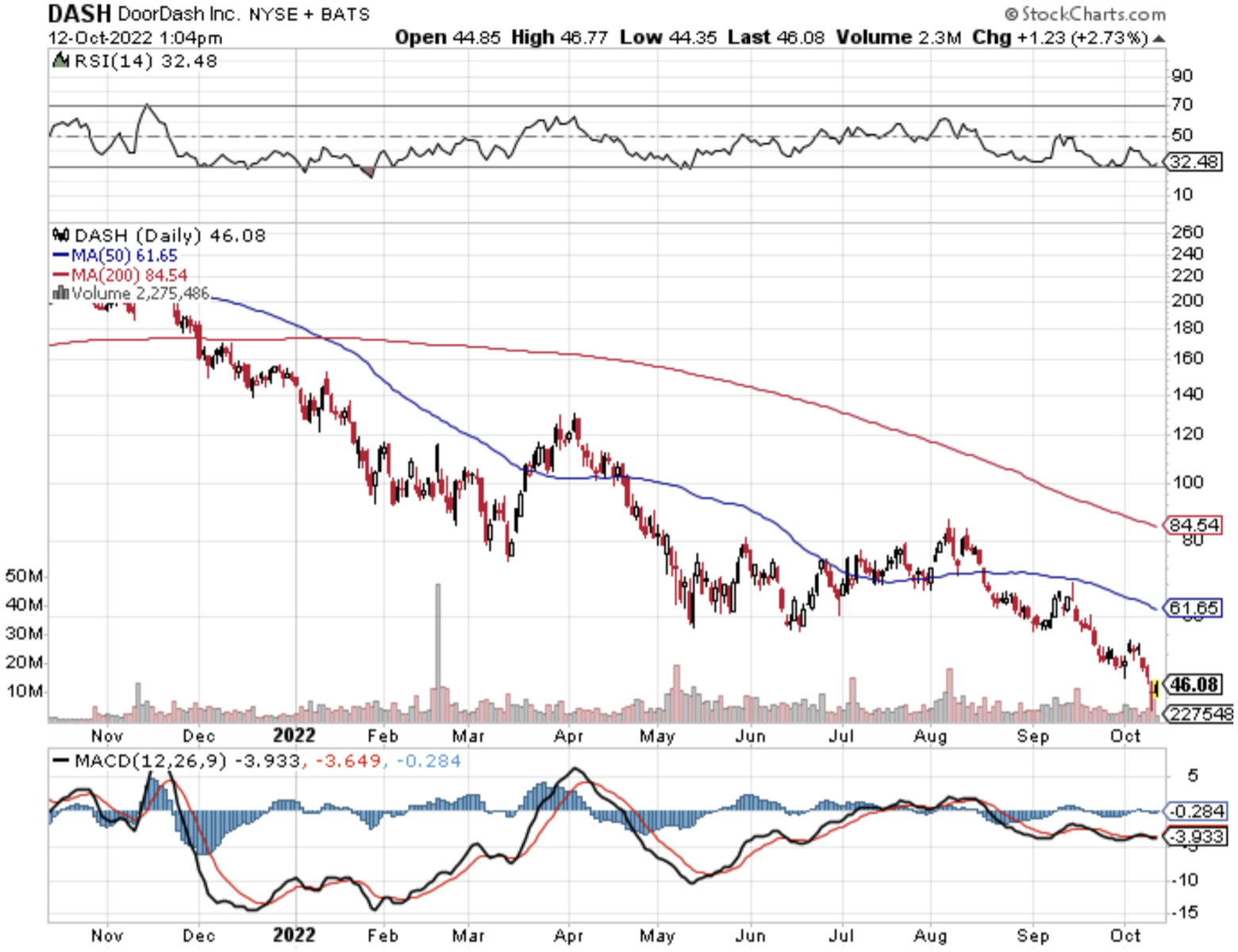
Mad Hedge Technology Letter
April 26, 2021
Fiat Lux
Featured Trade:
(BUY OR SELL DOORDASH?)
(DASH), (GRUB), (UBER)

As the work from home economy de-levers, the biggest loser of this trend will be the food delivery company DoorDash (DASH).
As the stock rallied last Friday by 6% into the close, I couldn’t help but think to myself that it is a great time to short the stock.
Considering that total sales grew close to 400% last year but the stock is lower, this basically means that DASH couldn’t deliver what shareholders wanted in a historic year for most tech companies.
What makes anyone think that 2021 will be different?
Imagine what the next phase of development looks like, quite bleak.
The health crisis unlocked a tsunami of growth for many emerging and unprofitable technologies.
Software and hardware companies were clear beneficiaries of economic lockdowns that triggered a boom in the food delivery industry.
With nowhere to eat out at, the business of eating a prepared meal was effectively handed to DoorDash on a silver spoon.
Despite this powerful tailwind, the company still failed to deliver positive earnings amid additional expenditure such as marketing.
As the pandemic navigates towards a solid solution and consumers return to restaurants, DoorDash will be left holding the bag.
First, let me say, DoorDash’s operating narrative is weak.
They earn revenue by taking a percentage of restaurant sales on its platform.
A glorified pizza delivery boy at scale is what they really are.
They describe sales as marketplace gross order value or GOV which totaled $24.66 billion in 2020 — a 326% increase over 2019.
In short, it's the total amount of money that DoorDash users paid for food.
For context, this metric grew 187% in 2019 compared to 2018, but off a much lower base from $2.8 billion and now project marketplace GOV in 2021 in the range of $30 billion to $33 billion, which is a substantial deceleration in growth rate from 2020.
The bottom line is they are still losing around the same amount of money with no solution in sight.
The next steps of the global economies are to open further, with fewer people staying home and using food delivery, so the question is whether the DoorDash marketplace will grow at all this year.
Despite a record 2020 that more than quadrupled the company's revenues, it is becoming clear that DoorDash will not even be close to profitable.
It appears DoorDash's growth in costs tracked closely with growth in revenue, in dollar terms, leading to net losses that only marginally improved.
The main thesis of these gig economies is that they become incrementally profitable at scale, but DoorDash’s financials suggest it isn’t.
I would like to hear what the next way forward is, but the firm is essentially a one-trick pony in a hopeless industry.
If interests tick higher and regulation toughens, this stock will get hit hard.
There are too many tech firms in the food delivery space and consolidation will force management’s hand.
Uber Eats is the reason that DASH won’t be able to raise prices.
DoorDash holds an advantage with 55% of the US market, but both Uber Eats (at 21%) and GrubHub (GRUB) (at 16%) have made aggressive acquisitions to help them grab market share.
All of these companies often mirror age products with no differentiation.
It is a very homogenized product.
Uber Eats has the largest global footprint in the industry, with a higher overall gross order value that hit record levels in 2020, yet that company loses money like DASH.
GrubHub also delivers the same terrible unit economics that DASH does, giving investors higher revenue but marginal margin improvements and profitability.
Companies that cannot become profitable when 4X their revenue need to be overlooked and this statement could cut across all industries from energy to retail.
Imagine that Dash also couldn’t improve unit economics when gas prices cratered as well.
It appears that Dash will have most external forces working against them for the rest of the year and this is a great stock to sell rallies on.
The initial peak of $230 could well become the peak for this stock and the current share price is 1/3 lower, but I believe a fair market cap would be half the peak of $230 in 2021.
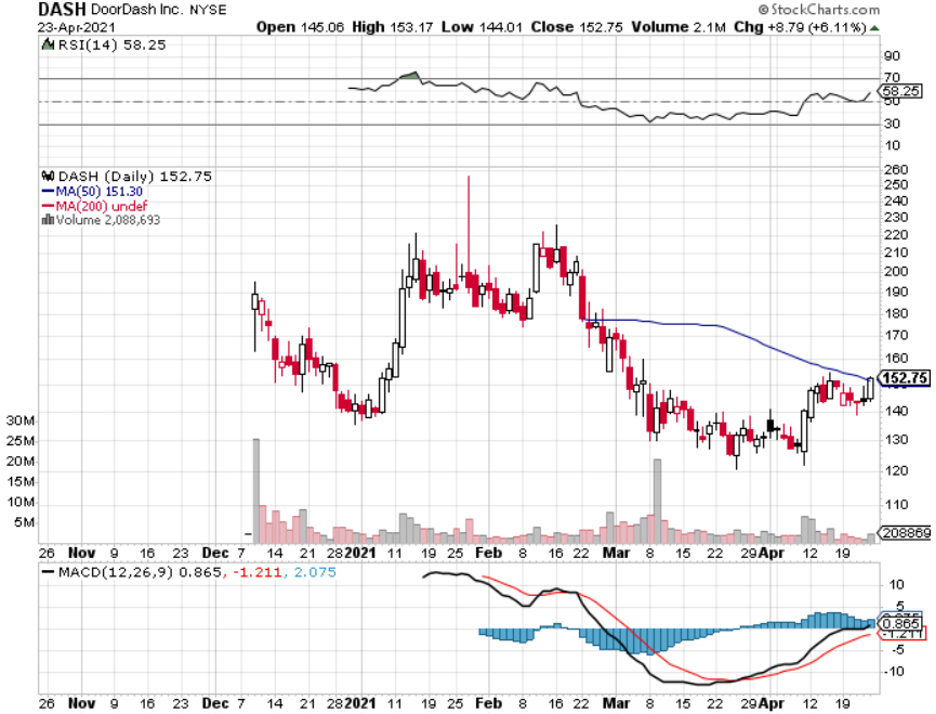
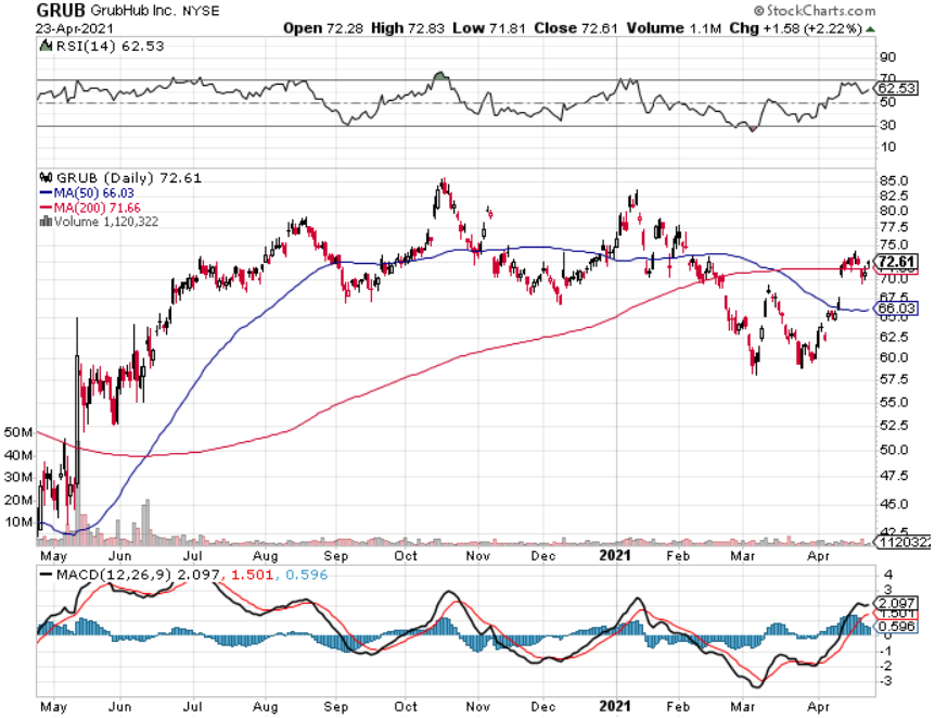
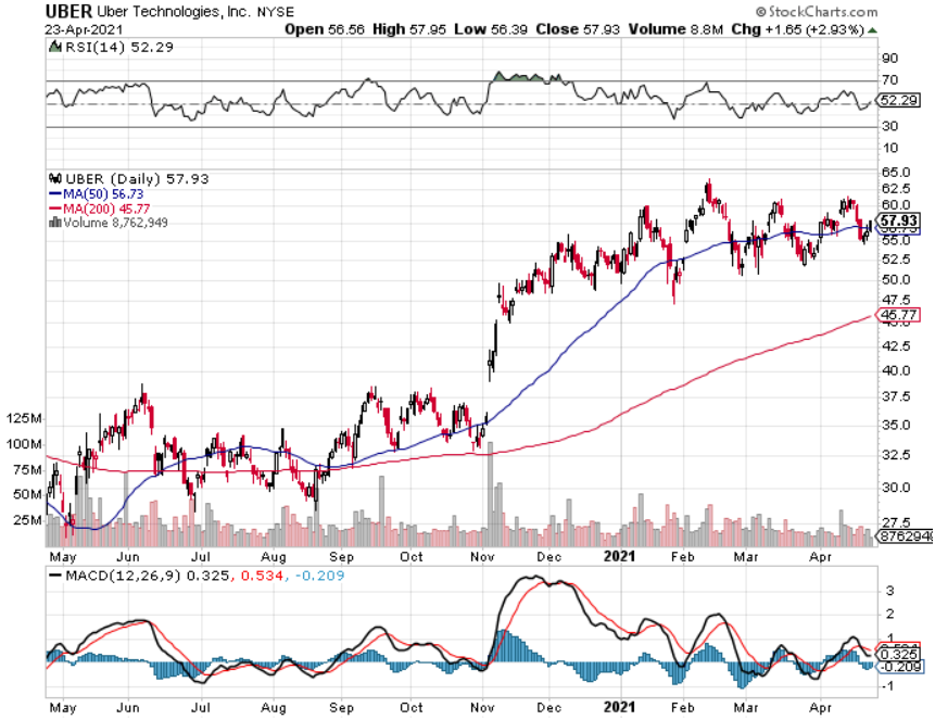
Global Market Comments
December 11, 2020
Fiat Lux
FEATURED TRADE:
(DECEMBER 9 BIWEEKLY STRATEGY WEBINAR Q&A),
(GLD), (FXA), (FXE), (FXC), (UUP), (FXB), (ABNB), (DASH), (TAN), (TLT), (TBT), (NZD), (DKNG), (SNOW), (AAPL), (CRSP), (RTX), (NOC)

Below please find subscribers’ Q&A for the December 9 Mad Hedge Fund Trader Global Strategy Webinar broadcast from Incline Village, NV with my guest and co-host Bill Davis.
Q: Is gold (GLD) about ready to turn around from here?
A: The gold bottom will be easy to call, and that’s when the Bitcoin top happens. In fact, we have a double top risk going on in Bitcoin right now, and we had a little bit of a rally in gold this week as a result. So, longer term you need actual inflation to show up to get gold any higher, and we may actually get that in a year or two.
Q: The US dollar (UUP) has been weak against most currencies including the Canadian dollar (FXC), but Canada has the same problems as the US, but worse regarding debt and so on. So why is the Canadian dollar going up against the US dollar?
A: Because it’s not the US dollar. Canada also has an additional problem in that they export 3.7 million barrels a day of oil to the US and the dollar value have been in freefall this year. Canada has the most expensive oil in the world. So, taking that out of the picture, the Canadian dollar still would be negative, and for that reason I've been recommending the Australian dollar (FXA) as my first foreign currency pick, looking for 1:1 over the next three years. Of the batch, the Canadian dollar is probably going to be the weakest, Australian dollar the strongest, and the Euro (FXE) somewhere in the middle. I don’t want to touch the British pound (FXB) as long as this Brexit mess is going on.
Q: Would you buy the IPO’s Airbnb (ABNB) and Dash (DASH)?
A: No on Dash. The entries to new competitors are low. Airbnb on the other hand is now the largest hotel in the world, and it just depends on what price it comes out at. If it comes out at a stupid price, like 50% over the IPO, I wouldn’t bother; but if you can get close to the IPO price, I would probably buy it for the long term. I think you would have another double if we got close to the IPO price, so that is worth doing. They have been absolutely brilliant in their management and the way they handled the pandemic; they basically captured all the hotel business because if you rent an apartment all by yourself, the COVID risk is much lower than if you go into a Hilton or another hotel. They also made a big push on local travel which was successful. They gave up long-distance travel, and they’re now trying to get you to explore your own area; and that worked beyond all expectations. Even I have rented some Airbnb’s out in the local area like in Carmel, Monterey, Mendocino, and so on and I came back disease-free.
Q: If the United States Treasury Bond Fund (TLT) goes to a 1.00% yield, what would that translate to in the (TBT) (2x short treasury ETF)?
A: My guess is probably about $18, which has been upside resistance for a long time, but it depends on how long it takes to get there. You have about a 3% a year cost of carry on the TBT that you don’t have in Treasuries.
Q: Should we buy China stocks when the current administration is so negative on China?
A: Yes, that’s when you buy them—when the current administration is negative on China; because when you get an administration that’s less negative on China, the Chinese stocks will all rocket. There’s an easy 20-30% in most of the headline Chinese stocks from here sometime in 2021. And I'm looking to add more Chinese stocks. I currently have Alibaba (BABA), and that’s working well. I want to pick up some more.
Q: What about the New Zealand currency ETF (NZD)?
A: It pretty much moves in sync with the Australian dollar, but it’s usually a few cents cheaper and more volatile.
Q: Legalized sports betting seems to be on the upswing. Where do you see DraftKings (DKNG) going?
A: I think it goes up. I think there’s going to be a recovery in all kinds of entertainment type activities. Draft Kings got a huge market share from the pandemic which they will probably keep.
Q: Do we use spreads when playing (FXA)?
A: Yes, you can probably do something like a $70-$72 here one month out and make some decent money.
Q: How do you feel about Snowflake (SNOW)?
A: I wanted to get into this from day one, but it doubled on the IPO, and then it doubled again. It’s one of the only technology stocks Warren Buffet has bought in the last several years besides Apple (AAPL). So, it’s just too popular right now, it’s hotter than hot. They have a dominant market share in their big data platform, so it’s a great place to be but it’s really expensive now.
Q: Do your options trade alerts have any risk of assignment?
A: Yes, they do, but when you get an assignment it’s a gift, because they’re taking you out of your maximum profit point, weeks before the expiration. All you do is tell your broker to use your long position to cover your short position, and you will get the 100% profit right then and there. I say this because the brokers always tell you to do the wrong thing when you get an assignment, such as going into the market to close out each leg separately. That is a huge mistake, and only makes money for the brokers. For more details, log in and search for “assignments” at www.madhedgefundtrader.com
Q: Congratulations on your great performance; what could derail your bullish prediction?
A: Well, we’ve already had a pandemic so obviously that’s not it, and then you have to run by your usual reasons for an out-of-the-blue crash; let’s say Donald Trump doesn't leave the presidency. That would be worth a few thousand points of downside. So would a major war. We could have both; we could have a major war before a disrupted inauguration. The president has essentially unlimited ability to go to war at any time, so there aren’t too many negatives on the near-term horizon, which is why everyone is super bullish.
Q: What’s your opinion on the solar area, stocks like First Solar (FSLR) and the Invesco Solar ETF (TAN)?
A: I’m bullish. Even though they're over 300% since March, we’re about to enter the golden age of solar. Biden wants to install 500,000 solar panels next year and provide the subsidies to accomplish that. This all looks extremely positive for solar. In California, a lot of people will go solar, because getting an independent power supply protects you from the power shut-offs that happen every time the wind picks up, in which response to wildfire danger. We had ten days of statewide power blackouts this year.
Q: What are your thoughts on lithium?
A: I’m not a big believer in lithium because there is no short supply. The key to producing lithium is finding countries with no environmental controls whatsoever because it’s a very polluting and messy process to mine. Better to let other countries mine your lithium cheap, refine it, and then send it to you in finished form.
Q: Since you love CRISPR (CRSP) at $130, what about shorting naked puts? The premiums are really high.
A: I never advocate shorting naked puts. Occasionally, I will at extreme market bottoms like we had in March, but even then, I do it only on a 1 for 1 basis, meaning don’t use any leverage or margin. Never short any more puts than you’re willing to buy the stock lower down. People regularly see the easy money, sell short too many puts, and then get a market correction and a total wipeout of their capital. And they won't have to do that liquidation themselves; their broker will do it for them. They’ll do a forced liquidation of your account and then close it because they don't want to be left holding the bag on any excess losses. You won’t find out until afterwards. So, I would not recommend shorting naked puts for the normal investor. If you want to be clever, just buy an in-the-money call spread, something like a $110-$120 out a couple of months. That's probably a far better risk reward than shorting a naked put. By the way, I came close to wiping out Solomon Brothers 30 years ago because my hedge fund was short too many Nikkei Puts. In the end, I made a fortune, but only after a few sleepless nights (remember that Mark?).
Q: What do you think about defense stock right now?
A: I’m avoiding defense stock because I don’t see any big increases in defense spending in the future administration, and that would include Raytheon (RTX), Northrop Grumman (NOC), and some of the other big defense stocks.
SEE YOU ALL IN 2021!
Good Luck and Stay Healthy.
John Thomas
CEO & Publisher
The Diary of a Mad Hedge Fund Trader

Mad Hedge Technology Letter
June 12, 2018
Fiat Lux
Featured Trade:
(THE NEXT INDUSTRY SET FOR DISRUPTION),
(BITCOIN), (DASH), (MONERO), (LITECOIN)

Time after time.
Headlines leak into the public sensationalizing hackers and ruthless breaches of mass data.
It happens time after time.
To where do all these emails, phone numbers, and credit card numbers wash away?
Do they float off to data heaven?
Enter the dark web.
First, the deep web is part of the Internet that is not indexed by search engines.
You won't be able to populate these sites on a regular Google search or Bing.com (Do people still use this?).
The dark web is a small part of the greater deep web.
The way to access this part of the hidden Internet is to use a VPN (virtual private network) to connect to a specific server that facilitates the access to the dark web.
The last step is to download a specific Linux browser as a graphic interface tool to surf these sites.
In a 2017 report based on 2015 data from the Digital Society, eight countries were found with heavy usage of more than 300 Tor users per 100,000 Internet users.
Tor is the aforementioned Linux browser used to access the dark web. These countries and one territory with elevated Tor activity were in no particular order: Moldova, Monaco, Iceland, Liechtenstein, Seychelles, Cayman Islands, Luxembourg and Andorra.
The common link tying seven of these locations is their reputation as a hub for offshore capital.
Small, island countries have the propensity to attract capital by loosening regulation and becoming international financial centers.
Moldova is the only outlier. The high usage of Tor is certainly due to its close proximity, set adjacent to Ukraine, which is still bogged down in an atrocious war against Russian separatists in the southeast of Ukraine.
No doubt, the average person would rather not know what illicit products and services are flowing through the Moldovan conduit leading to the borders and territories of Ukraine and Russia.
These offshore capital hotbeds are using the dark web for targeted reasons.
The main products sold on the dark web are not for the faint of heart.
Illegal drugs of any ilk, hacking services, adult-rated content, and fraudulent documents is on the a la carte menu.
Effectively, this mysterious marketplace offers incentives for hackers to commit heinous crimes in order to sell on the information they desire.
To maintain anonymity, products are mainly transacted in cryptocurrency.
Bitcoin has been the crypto of choice for dark web vendors. However, its exorbitant transaction costs have propelled other cryptocurrencies into the main light, with Litecoin currently being accepted by about 30% of dark web vendors.
Bitcoin is in the process of being undercut by its digital brethren.
The dark web is the economic backbone to the existence of cryptocurrency, and any regulation on the dark web would hammer the price of its main flagship currency bitcoin.
The billions in arms' sales and illicit drugs compromise a meaningful chunk of bitcoin volume, and the ease of use and speed of transaction are important to time-sensitive deals.
Litecoin has grown in popularity - even with its lax security protocols - in Eastern Europe. It could be estimated that Ukraine is a focal point for dark web activity particularly in weapons and other war-related services.
Dash is another cryptocurrency finding favor with cybercriminal inner circles as it is easy to use.
A spike in demand for alternative currencies would hurt the price of Bitcoin that spiked just below the $20,000 threshold in late December 2017, only to reverse back to reality crashing to the $6,700 level.
Bitcoin is ensnared by the speed of processing the transactions.
Cybercriminals cringe because of the sloth-like transactional speeds.
Usually, the processing time is a few hours.
This shift to more exotic digital tender could explain part of the reason of the bitcoin crash.
Bitcoin could turn out to be the victim of its own success.
The overwhelming popularity has alerted enforcement to target bitcoin transactions because of the large volume.
However, it could be game over for bitcoin as alternative currencies offer criminals an added layer of anonymity because law enforcement agencies do not have the expertise or the resources to track every type of cryptocurrency around the world.
As of April 2018, the world played host to 1,565 cryptocurrencies, and the number is growing by the day.
Particularly, Monero has caught fire in Asia where bitcoin volume is highest and is ground zero of the bitcoin movement.
North Korean state-sponsored hacking teams are especially fond of Monero.
Monero does not even crack the top 10 of cryptocurrencies aiding North Korean operations flying under the radar.
No doubt North Koreans have branched out into other undetectable crypto assets that have higher degrees of stealth elements.
Proprietary software created by the North Koreans saw infected code successfully mine Monero on South Korean computers that rerouted the proceeds back to North Korea.
Crypto mining is the process of solving complicated math problems resulting in the creation of new coins.
Developers have praised Monero for being "super anonymous" and is one of the best currencies to avoid capital controls.
Monero has given life to North Korean hackers and its blockchain is intentionally made to be obscure.
It obfuscates the wallet addresses from where people send Monero, rendering it more anonymous.
A Monero transaction only takes 21 minutes to complete, giving cybercriminals a fast way to smash and grab and move onto the next deal.
Japan, hoping to be the unequivocal leader of the fintech and blockchain revolution, officially recognized bitcoin as an official currency in April 2017.
The cryptocurrency tax windfall is predicted to mint the Japanese government coffers by up to $10 billion in the 2017 fiscal year.
If this digital currency revolution has legs, Japan wants to be the leader in the field and has positioned itself to reap the rewards.
And with most businesses in this world, the migration toward technology is forcing anything and everything to become fully or partially digitized.
Currency is no exception.
China has outright banned cryptocurrency on the mainland, but the use case for Chinese citizens is strong.
Each Chinese citizen is allowed to convert a yearly quota of $10,000 into U.S. dollars from Chinese local currency as a way for the government to control the currency price movements.
This is a paltry amount for a country that has seen its elite enriched and a burgeoning middle class that wants to park its assets overseas in safe Western financial systems.
Cryptocurrency proved wildly popular in China by locals circumnavigating capital controls before the ban and proves that many countries rich and poor have a use case for cryptocurrency.
In the future, expect the Asian region to take the lead in cryptocurrencies. The bitcoin crash could get worse as a result of the disruption caused by lesser known cryptocurrencies with better technology and faster transaction speeds.
Bitcoin could be on the verge of going to zero, and its economic pipeline from the dark web could be spread out into thousands of untraceable currencies of which people have never heard.
Let's face it, if law enforcement is setting traps for bitcoin transactions, it is probably better to use one of the other 1,564 currencies at your disposal.
It does not take a genius to figure this out.
As for the Mad Hedge Fund Trader, to go that far out on the risk curve with a highly unpredictable and highly volatile digital currency that is based on no fundamentals is not my cup of tea.
There are so many better things to buy right now.



_________________________________________________________________________________________________
Quote of the Day
"It's probably rat poison squared," - said legendary investor Warren Buffett when asked about bitcoin.

Legal Disclaimer
There is a very high degree of risk involved in trading. Past results are not indicative of future returns. MadHedgeFundTrader.com and all individuals affiliated with this site assume no responsibilities for your trading and investment results. The indicators, strategies, columns, articles and all other features are for educational purposes only and should not be construed as investment advice. Information for futures trading observations are obtained from sources believed to be reliable, but we do not warrant its completeness or accuracy, or warrant any results from the use of the information. Your use of the trading observations is entirely at your own risk and it is your sole responsibility to evaluate the accuracy, completeness and usefulness of the information. You must assess the risk of any trade with your broker and make your own independent decisions regarding any securities mentioned herein. Affiliates of MadHedgeFundTrader.com may have a position or effect transactions in the securities described herein (or options thereon) and/or otherwise employ trading strategies that may be consistent or inconsistent with the provided strategies.
This site uses cookies. By continuing to browse the site, you are agreeing to our use of cookies.
OKLearn moreWe may request cookies to be set on your device. We use cookies to let us know when you visit our websites, how you interact with us, to enrich your user experience, and to customize your relationship with our website.
Click on the different category headings to find out more. You can also change some of your preferences. Note that blocking some types of cookies may impact your experience on our websites and the services we are able to offer.
These cookies are strictly necessary to provide you with services available through our website and to use some of its features.
Because these cookies are strictly necessary to deliver the website, refuseing them will have impact how our site functions. You always can block or delete cookies by changing your browser settings and force blocking all cookies on this website. But this will always prompt you to accept/refuse cookies when revisiting our site.
We fully respect if you want to refuse cookies but to avoid asking you again and again kindly allow us to store a cookie for that. You are free to opt out any time or opt in for other cookies to get a better experience. If you refuse cookies we will remove all set cookies in our domain.
We provide you with a list of stored cookies on your computer in our domain so you can check what we stored. Due to security reasons we are not able to show or modify cookies from other domains. You can check these in your browser security settings.
These cookies collect information that is used either in aggregate form to help us understand how our website is being used or how effective our marketing campaigns are, or to help us customize our website and application for you in order to enhance your experience.
If you do not want that we track your visist to our site you can disable tracking in your browser here:
We also use different external services like Google Webfonts, Google Maps, and external Video providers. Since these providers may collect personal data like your IP address we allow you to block them here. Please be aware that this might heavily reduce the functionality and appearance of our site. Changes will take effect once you reload the page.
Google Webfont Settings:
Google Map Settings:
Vimeo and Youtube video embeds:
